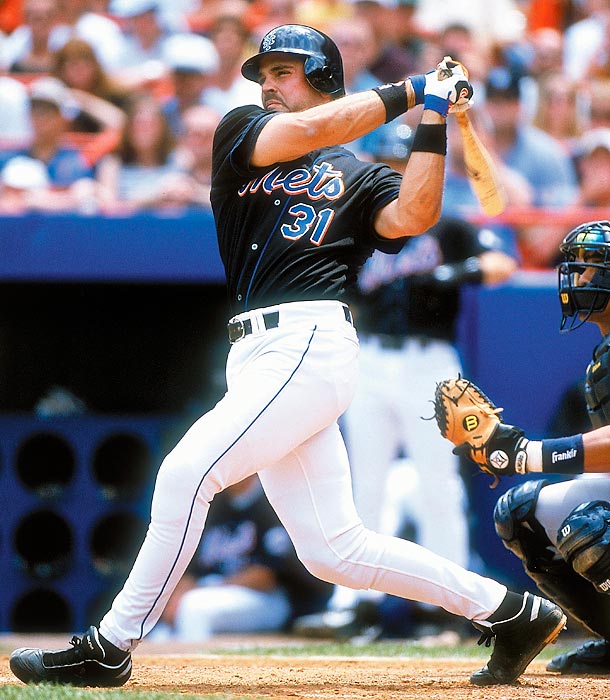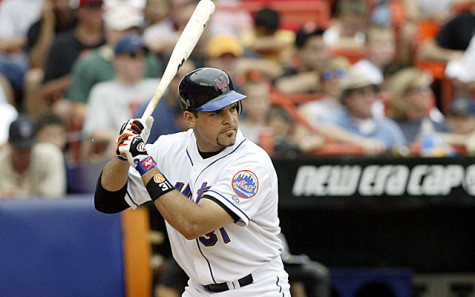
2004 was a bizarre year for the Mets.
Going into that season, a 20-year-old prospect by the name of Jose Reyes was slated to become the Mets’ shortstop of the future. He had made his debut in 2003 at 19 years old, becoming the first Mets teenager in nearly 20 years. Despite playing relatively well on defense (1.0 dWAR in 69 games), Reyes was forced to move to second base because the Mets had a new shortstop of the future: Kazuo Matsui, who was a big-ticket signing from Japan.
The whole scenario seems laughable in hindsight, but it made some sense in 2004: Matsui was an established star at the position from his years in Japan where he was a legend and Reyes was supposed to be versatile enough to move over a few feet to his left.
Needless to say, this move didn’t work out for anyone. Reyes struggled at second, as his dWAR fell to 0.2, and Matsui didn’t fare much better at short.
Reyes was permanently moved to shortstop in 2005, and never played another game at second base, until this past week in Colorado.
The now 34-year-old stands to play a lot more second base now that Amed Rosario is the Mets’ shortstop of the future and this is the immediate thought of Jose Reyes playing second.
But it also triggers a nostalgic trip to that ’04 season, when he was just a 21-year-old kid playing out of position. And that year, he wasn’t the only Mets legend playing out of position– anyone remember Mike Piazza at first?
By 2004, Piazza was 33 years old, and a far cry from the player he was just a few years earlier for the Mets. His age and physical decline prompted Mets manager Art Howe to transition him to first base, where he would split time (or eventually play full time) as his career went on. This would also make room for a young Jason Phillips to catch — he had batted .298/.373/.442 in 2003.
Here’s an excerpt from a New York Daily News article from the time:
HOUSTON – Mike Piazza can leave the shin guards in his locker. He’s officially a first baseman, with part-time catching responsibilities. Art Howe revealed yesterday that Piazza, who started at first base for the third time in four games last night against the Astros, will catch roughly two times a week. (Don’t worry, he told Piazza before the media.)
“I actually had a talk with Mike a few days ago and told him my plan was to catch him a couple of games a week and try to play him at first quite a bit,” Howe said.
Piazza, who passed Carlton Fisk for most homers all-time by a catcher during the last home stand, embraced the move. In fact, Piazza even revealed that, in retrospect, he wished he had played first a few years earlier. He told Todd Zeile as much on the bench on Friday night.
“I said, ‘You know what? It’s funny. If I would have known the way I feel after a couple of days playing first, I probably would have thought about doing it a few years ago.”
Although first base would have obviously been less strenuous physically, Piazza never looked quite comfortable at the position. And it showed in his -22 defensive runs saved and -1.3 dWAR. Although he was never a Gold Glove catcher, he was far better there thanks to over a decade of big-league experience than he ever was at first base.
His defense at first compared to his defense behind the plate made the latter look like Yadier Molina. All and all, Piazza played 68 games at first base in 2004 (he also played one inning at first in 2003, his first MLB appearance at the position).
Piazza came back behind the plate in 2005, and would remain there for the rest of his career– aside from the time he spent as a DH in Oakland. The Hall of Famer’s stint at first base is probably the most overlooked part of Piazza’s career, and for good reason: There was nothing memorable about it.
And aside from David Wright‘s MLB debut, there was nothing memorable about the 2004 Mets at all. Thanks, Art Howe.
There may be nothing comparable to the two situations in the long run, but it brings back memories of a strange yet interesting time in Mets history.















